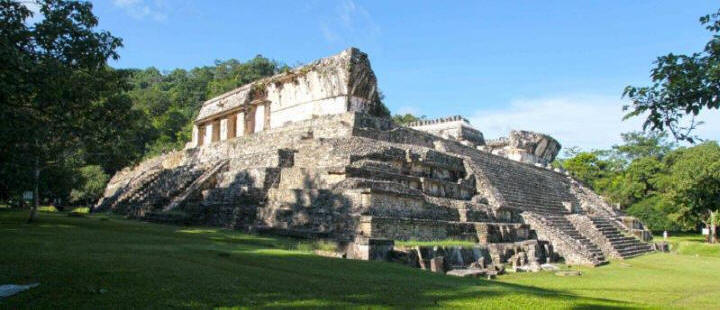Palenque The Great Palace

The Great Palace
Who can resist a castle in the jungle with the sounds of howler monkeys growling in the background?
The Palace is located in the center of Palenque’s ceremonial zone next to the Palace of Inscriptions and Pacal’s Tomb. It was the beautiful awe inspiring residence of the kings and their immediate family as well as the location for royal celebrations and feasts, administrative hub for work and receiving bay for visiting dignitaries.
The Palace is not one building but rather a magnificent complex of different structures built and modified over 500 years from 400 to 900 AD. Built on a huge artificial terrace 100 by 80 meters or 328 by 263 feet, the interconnected buildings are joined with hallways, corridors and staircases. These and the four main courtyards and galleries are elaborately decorated with highly artistic quality bass relief carvings, sculptures, and hieroglyphic drawings. A subterranean portion of the Palace contained sweat baths and six toilets.
Pacal built a white throne room in Casa E in the 7th century with stucco motifs, likely painted bright red with accents of blue, yellow white and green. The rooms faced an open patio and had high thatched roofs. The throne, a stone bench is where Pacal likely received nobles and dignitaries from other Maya cities. The famous Oval carving is to the rear of the throne and describes Pascal the Great accession to the throne receiving the emblems of office from his mother Zac Kuk, a short reigning queen. ‘.Palenque – The Ancient City The palace Bill Bell Photograph
In the Patio of the Captives are numerous slabs detailing Palenque’s military achievements. The “captives” are likely conquered rulers brought to Palenque as prisoners. A text inside the Palace describes the 654 to 668 alliance with the cities of Tikal and Yaxchilán and that they captures six kings that were enemies of their political alliance.
The tower, likely used as an observatory and lookout, was built by Ahkal Mo’ Nahb’ III in the 8th century. It has fine stucco reliefs; however these are now blocked off to tourists. It was also believed used by royalty and the priests during the winter solstice to observe the sun setting directly into the Temple of Inscriptions.